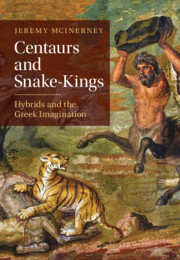Book contents
- Frontmatter
- Dedication
- Contents
- List of Figures
- Preface
- Acknowledgments
- Spelling and Orthography
- 1 Introduction: Encountering the Sphinx
- 2 ‘Welcome to Athens’: Theories of Hybridity
- 3 Hybrids around the Corrupting Sea
- 4 Hybrids, Contact Zones and Margins
- 5 Heads or Tails: Gorgons, Satyrs and Other Composites
- 6 Centaurs and Other Horses
- 7 Snakes and the Perils of Autochthony
- 8 Hermaphrodites and Other Bodies
- 9 Adynata, Ethnography and Paradox
- 10 Conclusions
- Bibliography
- Index
1 - Introduction: Encountering the Sphinx
Published online by Cambridge University Press: 16 August 2024
- Frontmatter
- Dedication
- Contents
- List of Figures
- Preface
- Acknowledgments
- Spelling and Orthography
- 1 Introduction: Encountering the Sphinx
- 2 ‘Welcome to Athens’: Theories of Hybridity
- 3 Hybrids around the Corrupting Sea
- 4 Hybrids, Contact Zones and Margins
- 5 Heads or Tails: Gorgons, Satyrs and Other Composites
- 6 Centaurs and Other Horses
- 7 Snakes and the Perils of Autochthony
- 8 Hermaphrodites and Other Bodies
- 9 Adynata, Ethnography and Paradox
- 10 Conclusions
- Bibliography
- Index
Summary
The sphinx is a good test case illustrating the complexities of studying Greek hybrids. The pronounced sexuality of modern sphinxes (notably those of Moreau and Ingres) sets them apart from Greek examples, which themselves are very different from the sphinxes of Egypt and the Ancient Near East. Common to all is the blurring of human/animal boundaries, a phenomenon going back to the Palaeolithic. Modern comparisons from New Guinea and Africa confirm that there is an animal dimension at the heart of being human. Hybrids, born of this mixing, are polymorphous, polysemic and polyvalent. Around the hybrid there lurks a host of questions: what bits have been mixed, how exactly are the parts combined, and is the mixture taxonomically fitting or anomalous? Each of these questions shapes our response to a hybrid, affirming the power of hybridity to challenge (or affirm) categories and taxonomies. And since taxonomies are the proof of our comprehending the world by classifying phenomena, hybridity represents a culture’s uneasiness with the limits of its epistemology. If such things exist, even if only in our stories and imagination, how certain is certainty?
Keywords
- Type
- Chapter
- Information
- Centaurs and Snake-KingsHybrids and the Greek Imagination, pp. 1 - 23Publisher: Cambridge University PressPrint publication year: 2024

